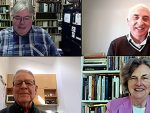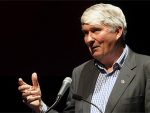With many of the concrete, hot-button issues removed from the agenda and turned over to study groups, some people wonder what members of the Synod of Bishops on Synodality will be doing when they meet at the Vatican in October.
For Pope Francis and synod organizers, though, taking issues like women deacons or seminary training off the table will allow the 368 synod members to focus on their main task:
Finding ways to ensure “the Church’s customs, ways of doing things, times and schedules, language and structures can be suitably channeled for the evangelisation of today’s world rather than for her self-preservation.”
Aims of the synod
Cardinal Mario Grech, general secretary of the Synod of Bishops, cited that quote from Pope Francis’ 2013 exhortation, “The Joy of the Gospel,” when explaining what the three-year process of the synod on synodality was all about.
The working document for the synod’s second session Oct. 2-27 summarised as its task:
“to identify the paths we can follow and the tools we might adopt in our different contexts and circumstances in order to enhance the unique contribution of each baptized person and of each Church in the one mission of proclaiming the Risen Lord and his Gospel to the world today.”
In the preface to a book on synodality, published in the Vatican newspaper Sept. 24, Cardinal Grech wrote that the consultations held with Catholics around the world starting in 2021-2022:
“noted, not without disappointment, the problem of a church perceived as an exclusive and excluding community — the church of closed doors, customs and tolls to be paid.”
“What needs to change is not the Gospel, but our way of proclaiming it,” he said.
Defining synodality
The task of synod members — bishops, priests, members of religious orders and lay men and women — will be to better define or at least describe what is meant by synodality and to suggest ways to live out that vision.
Specifically, that means:
helping people listen to one another and to the Holy Spirit;
looking at relationships within the church and making sure they empower every member to take responsibility for the church’s mission;
reaching out to people who have felt rejected or excluded by the church; increasing the accountability of people in leadership positions;
ensuring parish and diocesan councils are truly representative and listened to; and increasing opportunities for women to place their gifts and talents at the service of the church, including in leadership and decision-making.
While those goals make sense from an organisational point of view, the Catholic Church sees itself as the body of Christ, not an organisation, and it has traditionally tied the task of governance and decision-making to ordination.
How that authority is exercised can vary according to church, country and culture. Synod members come from more than 110 countries and from 15 of the Eastern Catholic churches.
Balancing unity and diversity
Part of the synod’s discernment involves listening to each other and to the Holy Spirit in respecting people’s traditions with a small “t,” while also being open to something new.
Pope Francis’ frequent observation that the Holy Spirit takes diversity and from it creates harmony, not uniformity, is a test for a church that is universal while also incredibly varied. Read more
- Cindy Wooden is a journalist with Catholic News Service.
News category: Analysis and Comment.




